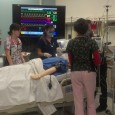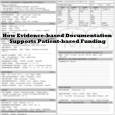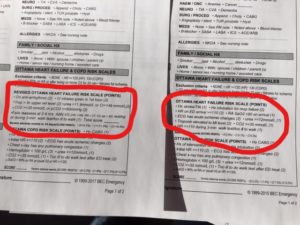Four Paths to Clinical Decision Support
 Clinical content and clinical decision support turn an EHR from an empty electronic shell into an effective tool for clinicians. Canada Health Infoway says that “the greatest value to future EHR functionality will come via clinical decision support and will change the way in which we think about care delivery”.
Clinical content and clinical decision support turn an EHR from an empty electronic shell into an effective tool for clinicians. Canada Health Infoway says that “the greatest value to future EHR functionality will come via clinical decision support and will change the way in which we think about care delivery”.
According to the U.S. Office of the National Coordinator for Health Information Technology, these tools have a number of benefits, including “increased quality of care and health outcomes, avoidance of errors and adverse events, and improved efficiency, cost-benefit, and provider and patient satisfaction”.
When we look at clinical content, we see a resource that can make shifts easier of nurses, physicians, and administrators while improving patient care.
Clinical content and decision support tools are also part of both governments’ plans to modernize healthcare documentation. Getting content right is critical, because without these tools “modern” documentation can be cumbersome (link). With the right content, EHRs can actually improve practitioner workflow.
Is Adding Clinical Support a Major IT Project?
Like any major hospital IT project, there are many stakeholders and issues that must be considered before implementation. At a glance, these include different departments, capacity for growth, maintenance, costs, buy-in, internal capacity, impact on workflow, implementation timelines, etc, etc.
Of these, the most important might be achieving buy-in. Without buy-in, the best tools will not be used and will be ineffective. We talk a little about achieving buy-in here.
However, integrating clinical content does not have to be a major IT project. This is one of its benefits; large gain for (potentially) minimal pain. The trick is how you go about selecting, developing, and customizing.
Four Ways to Get Clinical Decision Support to the Bedside:
There are four ways to develop content and clinical decision support tools:
- From scratch
- Generic solution
- From public sources
- Third party clinical content
Here’s a quick look at the benefits and drawbacks of each:
1. Build Your Own Content
This is clinical content and clinical decision support developed by clinicians at your hospital. Many hospitals have chosen this path, because it avoids an upfront cost (although it costs clinicians’ significant time). Hospitals that develop their own documentation systems typically create 8-10 templates to cover the majority of presenting cases.
Advantages:
- Upfront costs are hidden
- Once clinicians are convinced to build content, buy-in is almost automatically achieved
Disadvantages:
- Hidden costs: an effective template takes several months of development time – time clinicians could use seeing patients
- Minimal content minimizes the benefits of clinical decision support
- Generic clinical content has few integrated rules, meaning it provides only a basic level of support
- Ongoing maintenance is a concern
- It’s easy to find nurses and physicians to create a generic piece of content. However, if the content has effective clinical support, it needs to be maintained to ensure it reflects the latest evidence. About a third of content needs to be updated every year.
2. Use the Content that Comes with Your EHR
Some EHRs now come with a set of generic documentation tools. Similar to those tools made from scratch, these do not have advanced clinical decision support, but they do offer a starting point for hospitals that choose to develop their own content.
Advantages:
- Hidden costs
- The cost of this content is usually hidden in the overall cost of the EHR
- Starting point for development of custom content
Disadvantages:
- Generic content does not provide a high level of productivity or patient care benefits.
- If modified, difficult to maintain.
3. Use Public Resources to Build Your Own Content
Some hospitals have begun to share their clinical decision tools online. These have been developed on an ad hoc basis, but they can be a good starting point for other locations that want to develop their own content. For example, see here the CDS Portal.
Advantages:
- Good starting point for hospitals that want to create their own content
- Takes advantage of clinicians across the United States
Disadvantages:
- Maintenance of the content falls to the implementing hospitals
- Because content is developed on an ad hoc basis, coverage of presenting complaints is uneven.
- The quality of clinical content varies from complaint to complaint.
4. Use Third Party Clinical Content
Third party clinical content is often more up to date and better maintained than content that is created in house. However, there is significant variability in the quality of content, so you have to be careful to make sure you’ll get sufficient coverage, evidence-based support, and tools that are sufficiently specific to be helpful.
Advantages:
- Better coverage
- Maintained content stays up to date
- Outsourcing content greatly simplifies a big part of EHR implementation
Disadvantages:
- Cost of content is not hidden
- Variable quality of content
- Content must still be customized for your location
Example: BEC’s Clinical Content
BEC clinical content and clinical decision support offers updated and maintained clinical decision support for emergency departments. This content includes over 1000 nursing and physician notes that guide clinicians through proper documentation, and over 1000 differential diagnoses to reduce the risk of overlooking symptoms.
Advantages:
- Latest evidence-based clinical content and clinical decision support tools to cover virtually all presenting complaints
- Includes triage, documentation, order set, and discharge instruction content to make ED visits seamless from beginning to end.
- Can be customized to meet individual hospitals’ needs
Disadvantages:
- Specific to Emergency Departments
- Clinical content has not been developed for other specialities
- Licensing fees roughly equivalent to high end paper charts
Bottom Line
No clinical content solution is right for every hospital. Deciding what path to take depends largely on a hospital’s priorities, resources, and willingness to move forward.
Before you choose to adopt any clinical decision support tool, it is critical that you understand your hospital’s priorities and the options you have to meet these. Once you have agreement on the best outcome, it’s much easier to agree on the best path forward.
 Previous Post
Previous Post Next Post
Next Post

